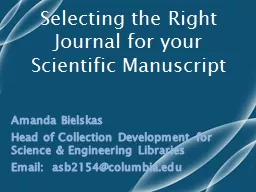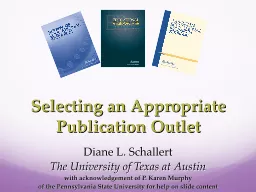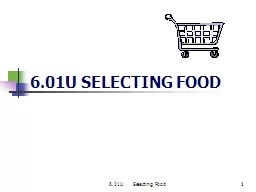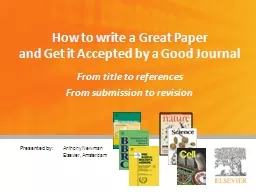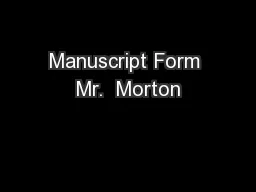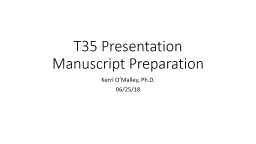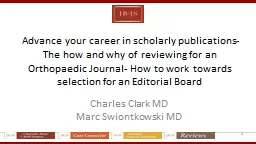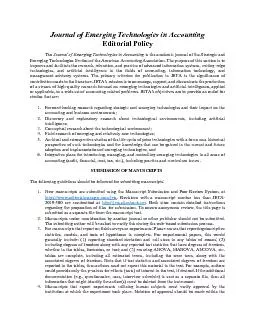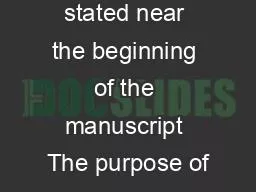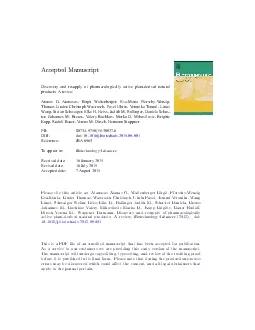PPT-Selecting the Right Journal for your Scientific Manuscript
Author : briana-ranney | Published Date : 2016-11-10
Amanda Bielskas Head of Collection Development for Science amp Engineering Libraries Email asb2154columbiaedu How many journals are out there to publish in does
Presentation Embed Code
Download Presentation
Download Presentation The PPT/PDF document "Selecting the Right Journal for your Sci..." is the property of its rightful owner. Permission is granted to download and print the materials on this website for personal, non-commercial use only, and to display it on your personal computer provided you do not modify the materials and that you retain all copyright notices contained in the materials. By downloading content from our website, you accept the terms of this agreement.
Selecting the Right Journal for your Scientific Manuscript: Transcript
Download Rules Of Document
"Selecting the Right Journal for your Scientific Manuscript"The content belongs to its owner. You may download and print it for personal use, without modification, and keep all copyright notices. By downloading, you agree to these terms.
Related Documents

